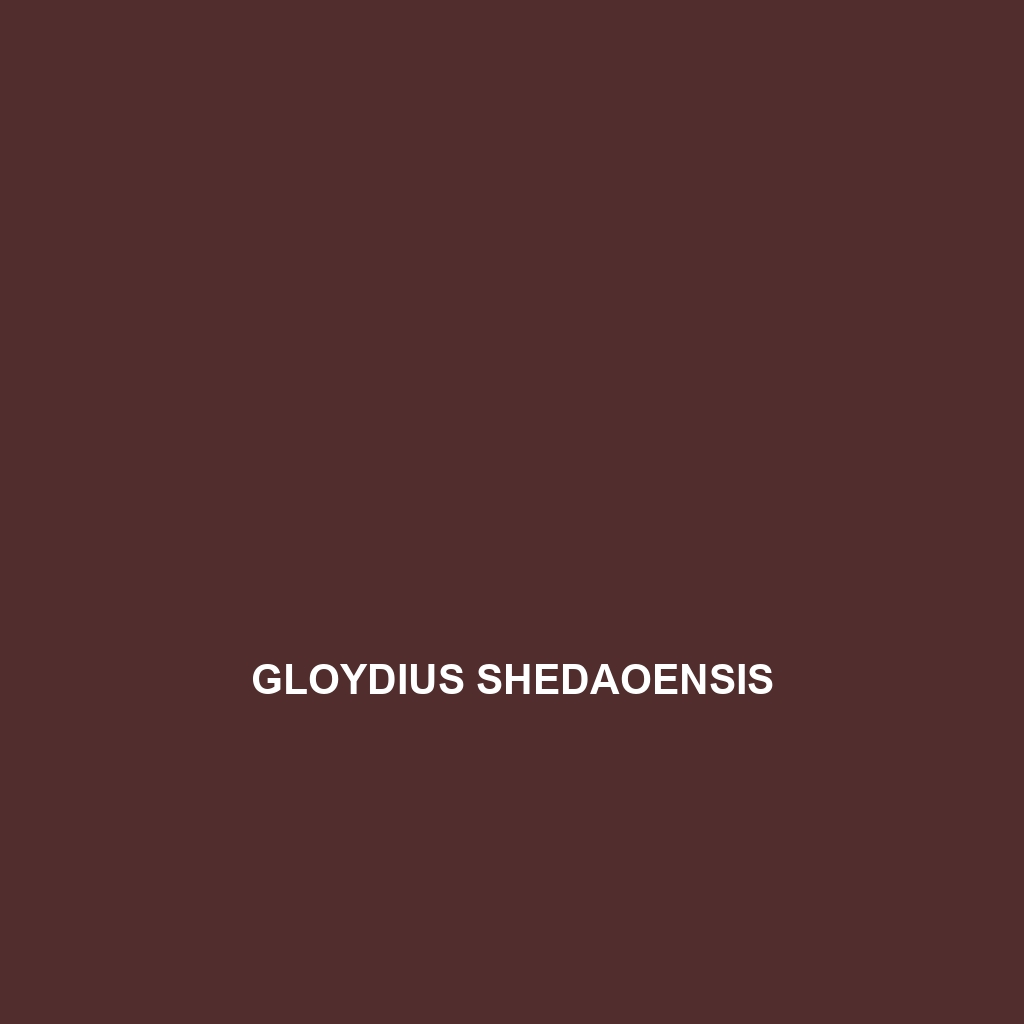Common Name
Gloydius shedaoensis
Scientific Name
Gloydius shedaoensis
Habitat
Gloydius shedaoensis, commonly known as the Shedao pit viper, is primarily found in the secluded island habitats of Shedao in the East China Sea. This species occupies a niche within temperate forests and subtropical moist deciduous forests, where it thrives in climates characterized by high humidity and warm temperatures. The ideal environmental conditions for this snake include forested areas near freshwater sources, such as streams and ponds, which provide both hunting grounds and hydration opportunities. The geographical location of Shedao Island makes it a unique microhabitat, isolating Gloydius shedaoensis and limiting its interaction with mainland species.
Physical Characteristics
The Shedao pit viper can be identified by its striking physical traits. Adult Gloydius shedaoensis typically measure between 60 to 80 centimeters (24 to 31 inches) in length. They possess a robust, triangular head that is wider than the neck, giving them a distinctive profile. Their coloration is usually a beautiful blend of olive-green to brown hues, adorned with dark brown or black markings, which provide effective camouflage against the natural forest undergrowth. A distinctive feature of the Shedao pit viper is its vertically elliptical pupils, a characteristic common among nocturnal species, enhancing its hunting efficacy during low-light conditions.
Behavior
Gloydius shedaoensis exhibits various fascinating behaviors. Primarily nocturnal, these snakes are most active at night when they hunt for prey. They employ ambush tactics, often remaining motionless in the foliage, waiting for unsuspecting animals to pass by. Socially, this species is relatively solitary but may encounter others during the mating season, which typically occurs in early spring. The mating rituals of the Shedao pit viper involve intricate courtship displays, where males engage in combat to win over potential mates. These combat displays may involve intertwining bodies and striking poses, showcasing strength and vigor.
Diet
The diet of Gloydius shedaoensis primarily consists of small mammals, birds, and lizards, categorizing this pit viper as a carnivore. It employs its heat-sensing pits to locate warm-blooded prey, which is crucial for securing its next meal. Their feeding pattern involves a strike-and-constrict method: after delivering a venomous bite, the snake constricts its prey until it can safely consume it. This strategy is particularly effective in capturing agile prey, ensuring that the Shedao pit viper can thrive in its ecological niche.
Reproduction
The reproductive cycle of Gloydius shedaoensis takes place once a year, with mating usually occurring in spring. After a gestation period of approximately three to four months, the female gives birth to live young—typically between 5 to 12 offspring at a time. These baby snakes are independent from birth, possessing similar coloration and characteristics as adults, but smaller in size. Parental care is absent in this species; the young are left to fend for themselves immediately after birth, relying on innate instincts to survive in their habitat.
Conservation Status
Gloydius shedaoensis is currently classified as vulnerable due to habitat loss and environmental changes impacting its natural ecosystem. The limited geographical range of Shedao Island makes this species particularly susceptible to threats such as deforestation and climate change. Conservation efforts are underway to protect its habitat, including local initiatives aimed at raising awareness and restricting land development. Preservation of the Shedao island environment is crucial for ensuring the survival of this unique species, which plays an integral role in its ecosystem.
Interesting Facts
One of the most interesting facts about Gloydius shedaoensis is its unique adaptation to its specific habitat; its coloration provides excellent camouflage among the foliage, making it an elusive predator. Interestingly, the venom of this snake is not only a hunting tool but also plays a role in its defense mechanism. Some studies have hinted at the potential medicinal uses of its venom, leading to increased interest in its biological properties. The Shedao pit viper’s rarity also makes it a subject of fascination among herpetologists and nature enthusiasts alike.
Role in Ecosystem
Gloydius shedaoensis plays a vital role in the ecosystem of Shedao Island as both predator and prey. As a predator, it helps maintain the population of small mammals and birds, contributing to a balanced food web. Additionally, its presence supports the health of the ecosystem by regulating prey populations, preventing overpopulation and resource depletion. Furthermore, the Shedao pit viper serves as a food source for larger predators, underscoring its integral role in the island’s biodiversity. Overall, this species contributes significantly to the ecological integrity and dynamic processes within its habitat.
